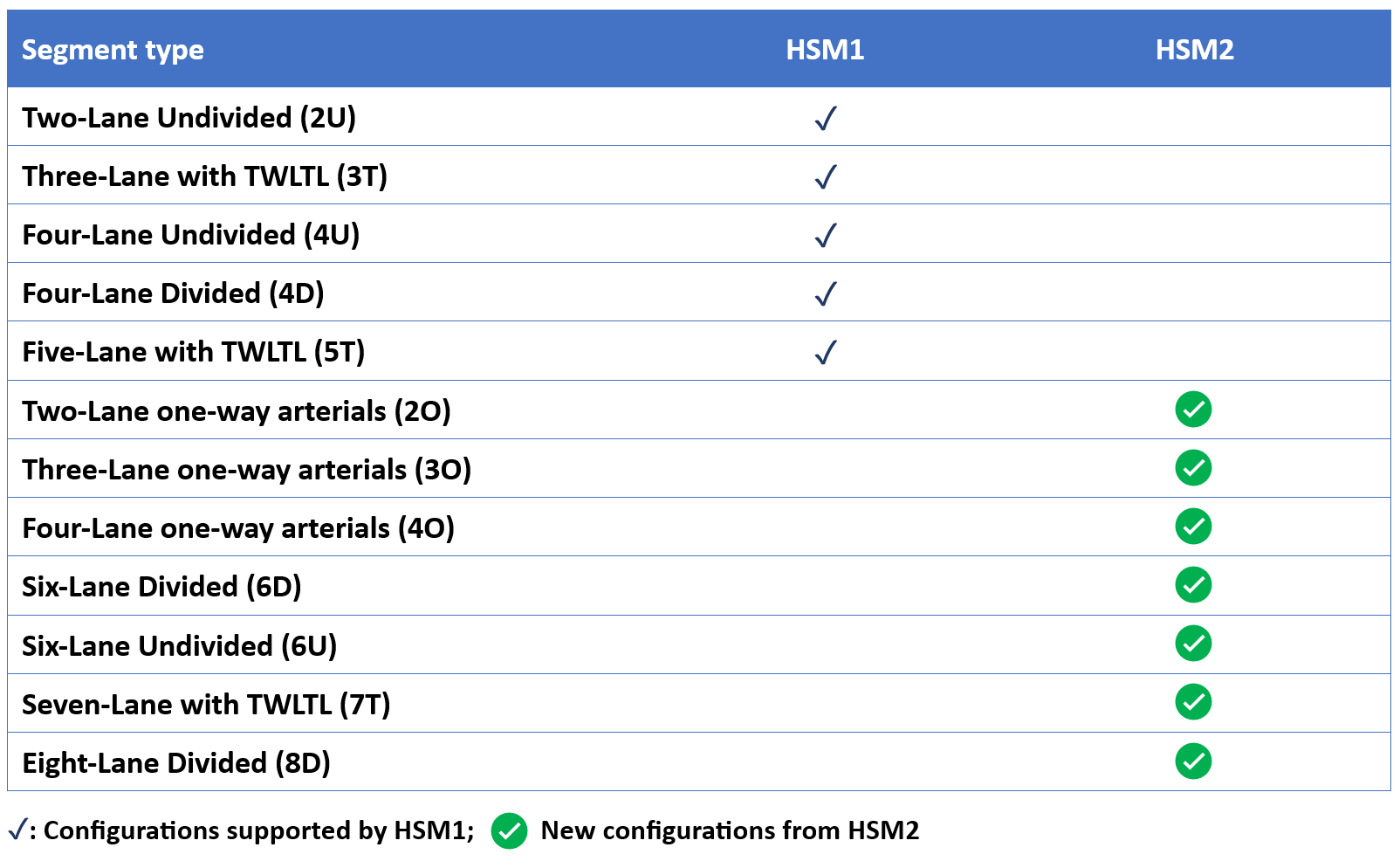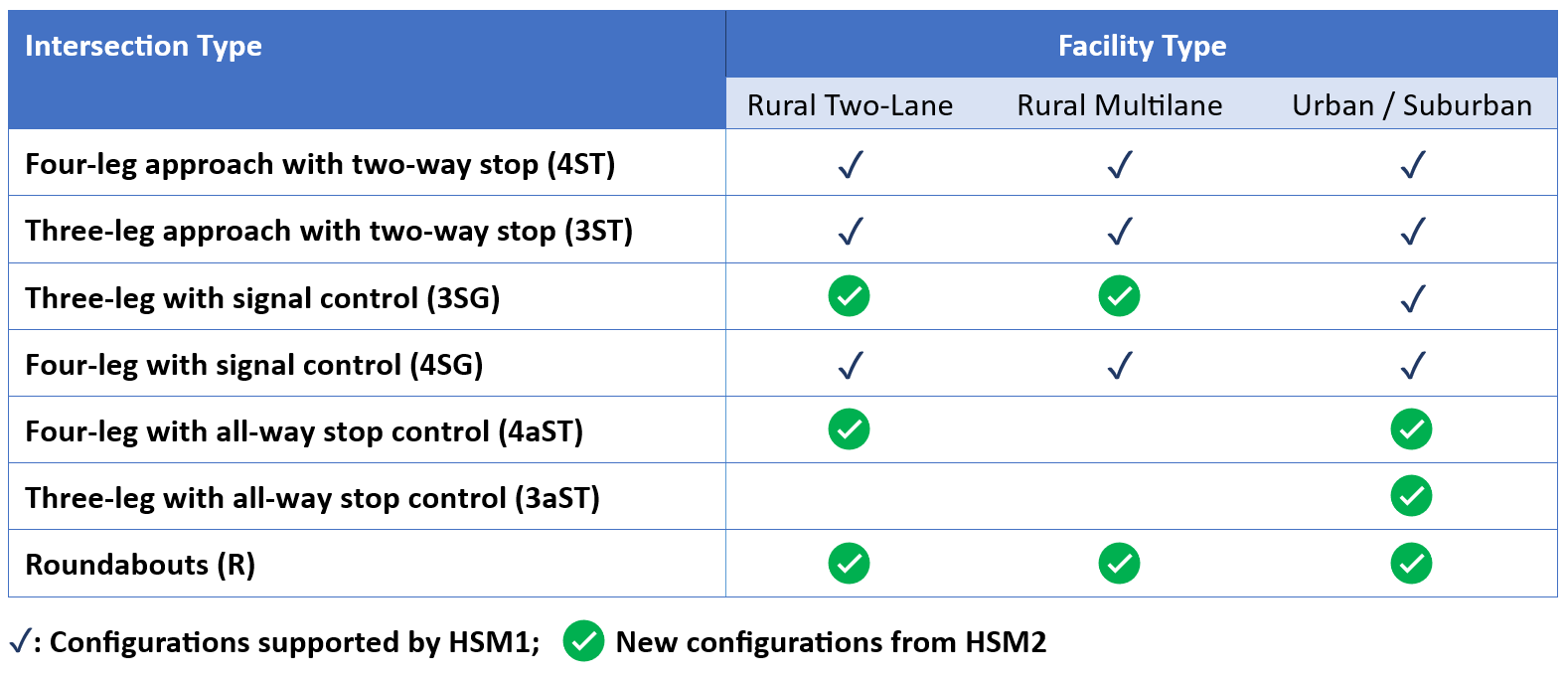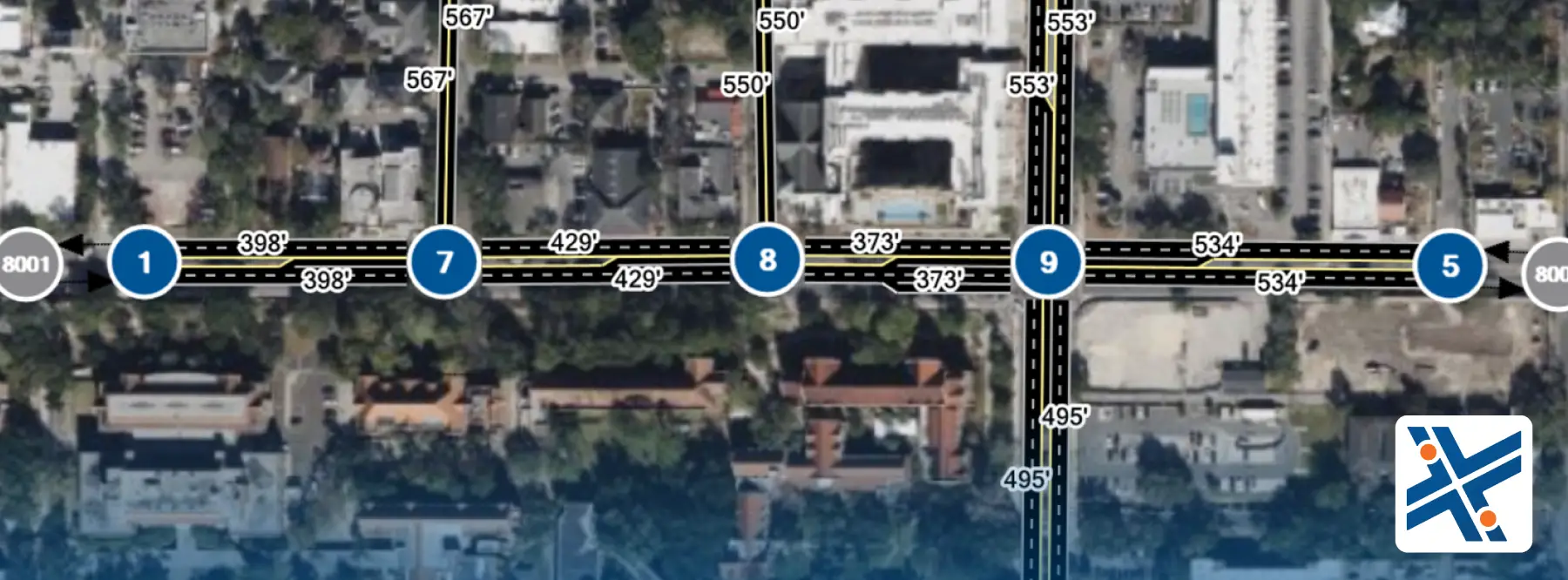The second edition of the Highway Safety Manual (HSM2) is currently being developed through the research project NCHRP 17-71A: Proposed AASHTO Highway Safety Manual, 2nd Edition, expected to be completed in 2024.
While its full scope it not yet known, it is expected that the new HSM2 will cover additional configurations for segments and intersections – a feature highly anticipated by safety practitioners. We look forward to seeing the full scope of analysis in the new manual. While we wait for the full release, our team is working hard to implement some of the new HSM2 methods into the Highway Safety Software 2024 release (HSS 2024) to allow our users to get a first-hand glimpse of the new methods.
This article highlights the features of new methods implemented in HSS 2024, which are expected to be part of the upcoming 2nd edition of the Highway Safety Manual (HSM2).
Urban/Suburban Arterials – New Segment Configurations
The HSM2 will significantly expand the scope of analysis for Urban and Suburban Arterials (current HSM Chapter 12). New segment configurations will include wider segments (six to eight lanes) and one-direction segments, based on NCHRP Web-Only Document 318 (Safety Prediction Models for Six-Lane and One-Way Urban and Suburban Arterials).
The following table summarizes the list of urban/suburban segments to be supported by HSS 2024:

For analyses of six and more lane segments, the core set of inputs required still remains, such as the Annual Average Daily Traffic (AADT), segment length, cross-section geometry, driveways, and roadside objects. New elements incorporated into the new methods include the effects of railroad crossings in the segment, to be modeled as a new CMF (Crash Modification Factor). Similar to other segment configurations in the current HSM, the new models can predict crashes for different severities (FI and PDO) and different road users: vehicles (single and multi-vehicle), bicycles, and pedestrians.
New Intersection Types
Two research projects, NCHRP Web-Only Document 297 (Intersection Crash Prediction Methods for the Highway Safety Manual) and NCHRP Web-Only Document 318 (Safety Prediction Models for Six-Lane and One-Way Urban and Suburban Arterials), expand the scope of analysis for rural two-lane, multilane, and urban/suburban intersections.
Although HSM1 currently supports signalized intersections, the current edition of the manual does not cover three-leg signals in rural roads (two-lane or multilane). These crash prediction models will now be included in HSS 2024 and will apply a similar framework already used in HSM1, facilitating its applications by users already familiar with current methods.
A new intersection configuration included in HSM2 is the all-way stop control (three and four legs), which is not supported in HSM1. The new crash prediction model is similar to the two-way stop control methods, with lighting being the only applicable Crash Modification Factor (CMF).
Finally, HSS 2024 also includes crash prediction models for roundabout intersections, as presented in NCHRP Research Report 888 (Development of Roundabout Crash Prediction Models and Methods). The available models apply to rural and urban/suburban locations. Similar to other intersection models, the Safety Performance Function (SPF) of roundabouts is determined as a function of AADT for the major and minor roads. The model is sensitive to the number of entering legs, number of circulating lanes, number of exiting lanes, and posted speed limit on the major road. It can also incorporate the effects of other geometric characteristics, such as bypass lanes and inscribed circle diameter (ICD).
The following table summarizes the list of intersections to be supported by HSS 2024:



